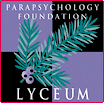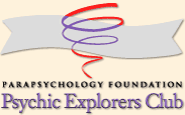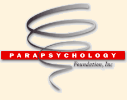 |
 |
| West Campus of the Institute of Noetic Sciences Petaluma, Ca., August 11th–15th, 2005 Gerd H. Hövelmann PF International Affiliate for Germany Marburg (Germany), September 18, 2005 As usual with PA Conventions on the American West Coast, attendance was somewhat smaller than tends to be the case with conferences on the East Coast or in Europe. However, because the convention was sandwiched between the first and the second half of an international parapsychological summer study program held at the Institute of Noetic Sciences, quite a number of new and mostly young faces appeared in the audience. There were five participants from Germany (including two PA members and two physicists who attended the summer study program), six or seven from the UK, three or four from South Africa, one (Mario Varvoglis, the PF’s International Affiliate) from France, and one (Fabio da Silva, a recent PF Grantee) from Brazil. All other participants came from the US and Canada. Although—or maybe because—the conference was relatively small in terms of attendance, almost everyone seemed to agree both during the conference and in discussions after the event (e.g., on the field’s chat lists) that the quality of the papers and their presentation was superior to that of most of the recent PA Conventions. Charles Tart even considered it the best PA Convention he ever attended. The beautiful bucolic landscape of the IONS Petaluma campus may have contributed to these assessments. On the negative side, there was a surprising number of scheduled presentations (4 out of 31 or almost 13%) that had to be cancelled because the presenters (including the Program Chair) failed to show up. The reasons were either unknown or due to illnesses. There were several sessions in the program that impressed me as particularly strong in terms of quality or potential consequences for future research. This started out with a session “Remembering Bob Morris” with moving contributions by Jim Carpenter and Hoyt Edge. The session “News from the Ganzfeld” saw an interesting contribution by Jim Carpenter on implicit measures of participants’ experiences in the ganzfeld that confirmed previous findings in a new sample, and an attempt by Fabio da Silva and his collaborators to define a more objective measure of psi through a newly designed “digital and physiological ganzfeld.” In a session called “Developments in ESP research,” all three empirical studies (one full paper and two research briefs) presented mildly promising results. The paper by Chris Roe (the PF’s International Affiliate from England) and his colleagues at the University of Northampton, reassessing the roles of sender and experimenter in dream ESP research, was particularly relevant for the design of future studies. In a very eloquent and clear presentation, Daryl Bem described new developments in his precognitive habituation paradigm with an automated computerized study design that, if continuously successful, would confront traditional psychological habituation theories with a number of serious problems. A study by Louie Savva (a PF Garrett Scholarship winner) and his colleagues basically confirmed Bem’s precognitive habituation paradigm. In a series of presentations on experiential studies a research brief by Christina Schäfer, a German PhD student in psychology, on the impact of exceptional human experiences on individual life histories stood out for its clarity. In the session on “Developments in PK Research” several new or refined study designs were introduced (sometimes with promising initial findings) by, among others, Dean Radin, John Palmer and collaborators, Nicola Holt and Chris Roe, and a German team of Matthias Bräunig, Tilmann Faul and Harald Walach, while two PK studies by a team of researchers from South Africa to me seemed to be open to methodological criticism. Two panels on, respectively, William Roll’s concept of the “long body” and the relationship between parapsychology and transpersonal psychology (the latter including Arthur Hastings, Charles Tart, Marilyn Schlitz and Stan Krippner as presenters) were, in my estimate, particularly successful both in explaining the underlying concepts and orientations and in re-structuring previous discussions for the benefit of future ones. In Caroline Watt’s Presidential Address I especially enjoyed the emphasis she placed on the need for fruitful collaboration between parapsychologists and the remaining small number of more or less well-informed skeptics. Not everyone shared this view—Russ Targ strongly opposed. In a couple of presentations, Marilyn Schlitz and Caroline Watt reviewed the decade-long skeptic-proponent collaboration in studies on the remote staring effect. While all previous studies had produced significant outcomes (significantly positive effects for proponent experimenters and mostly negatives ones for skeptical experimenters), the latest study (Watt, Schlitz, Wiseman & Radin) showed results very close to the chance expectation. With both historical and systematic orientation, Stephan Schwartz reviewed “The blind protocol and its place in consciousness research.” The paper (for which I had provided some “historical” input) successfully showed that the blind protocol in scientific research originated in what I would describe as “anomalistic” contexts and that in parapsychology, more than anywhere else, it has been successfully employed to winnow out fraud and avoid introducing experimenter effects. Generally speaking, I share the view that the 2005 Parapsychological Association Convention was among the best conferences in recent years. |
 |

|
 www. parapsychology. org |
||